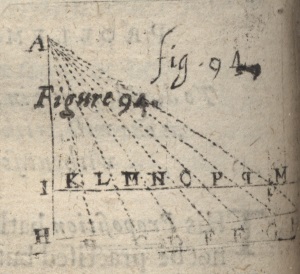Notes:
[0.] For what it’s worth, this
little number primer can be sung to the tune of
“The
Sailor’s Alphabet,” q.v.
1. Unity College, a somewhat offbeat
institution of higher learning, is located in
Unity, Maine.
2. Binary thinking is fundamental to
Western conceptualizing of the universe, and
thus causes a great deal of mischief in
instances where the world resolutely refuses to
be divvied up so tidily.
3. A fundamental mystery of
Christianity is how three persons can make up
one single God. We’ll let you know if anyone
comes up with a satisfactory explanation of
this, but meanwhile it is worth noting that
Indo-European religions and mythologies have
many such triads – the Three Fates, the Three
Graces, the triplet of Indra,
Mitra, and Varuna, and so on.
4. The words for “four” and for
“death” are homophonous in Japanese (shi), leading to a whole set of
avoidance behaviors linking the two.
5. E.g., many of the original roses
that are the genetic source for today’s
17-to-25-petal hybrids.
6. Chemist
Friedrich August Kekulé is commonly said
to have experienced the “Aha!” moment that
revealed to him the structure of the benzene
ring during a dream in which he saw a snake
eating its tail.
7. Seven as an auspicious number is
widespread, far beyond the gaming-table; there
are seven sages in Japanese folklore, we sail on
seven seas, a well-known
mid-century musical film stipulates seven
brides for seven brothers, and so on. The
reverse can also happen: See also the song “Seven
Rooms of Gloom,” famously recorded in the
1960s by the Motown ensemble The Four Tops.
8. The Sanskrit for “wheel” is chakra,
and not surprisingly the eight-spoked wheel
figures in ancient Vedic culture, as well as
later coming to symbolize the Eightfold Path of
Buddhism.
9. However, only three “tailors”
(=teller strokes) are rung to signify a dead
woman, for either sex followed by the number of
years the deceased had lived. A story is told of
the first Queen Elizabeth that on meeting with a
delegation of eighteen men from the tailors’
guild, she greeted them with “Good morrow,
gentlemen both.” If apocryphal it is well
invented.
10. “A perfect ten” refers both to
one’s score on a scale of one to ten and the
belief that a woman who can fit into a size ten
dress is the ideal size (though this is
culturally dependent; see Alexander
McCall Smith’s Mma Ramotswe’s frequent
remarks in praise of the “traditional” figure
for women in her native Botswana).
Bleen: The invention of comedian
George Carlin, defined as a hitherto
undiscovered integer between six and seven. (Not
to be confused with Nelson Goodman’s bleen, a
color which when you first see it looks blue but
on closer inspection you decide to characterize
as rather more green.)
Nick Humez is the co-author (with
Alex Humez and Joseph Maguire) of Zero
to Lazy Eight: The Romance of Numbers,
published by Simon and Schuster in 1995. Oddly
enough, when he was a schoolboy arithmetic was
by no means his strongest subject, but got
better.

